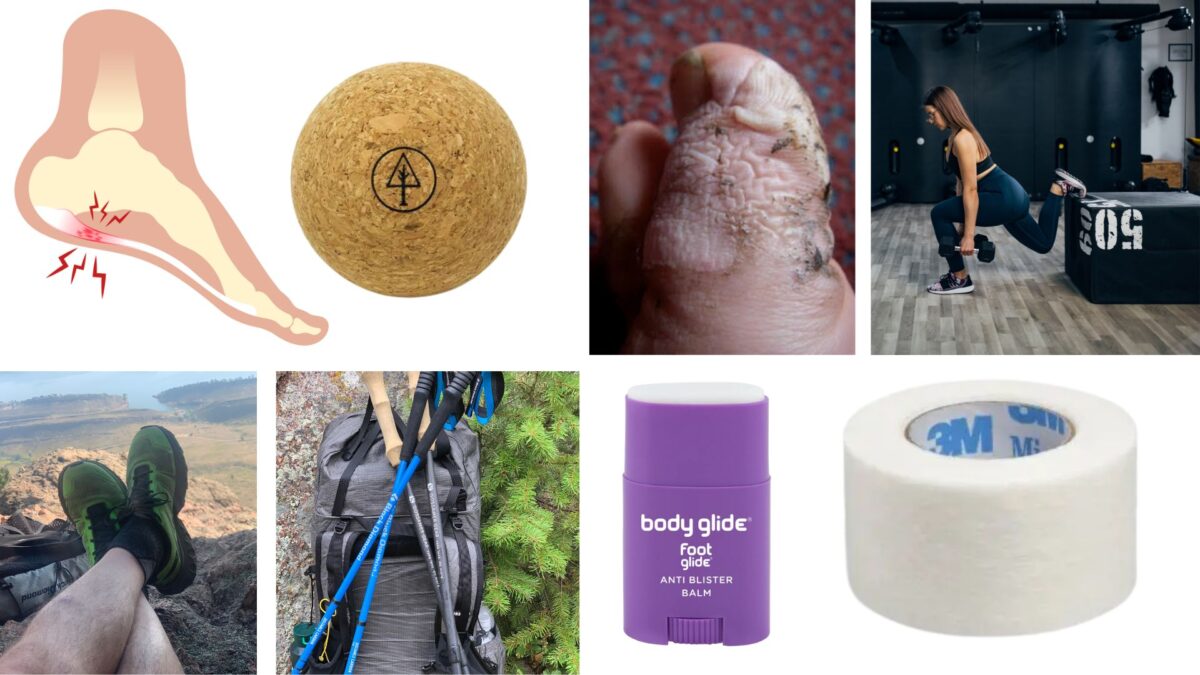Introduction
As the sun retreats behind a chain of snow-capped peaks in the distance, I can feel the air temperature begin to drop. I’m 18 hours into my attempt at running Patagonia’s Huemul Circuit. I’ve already crossed the glacier and both mountain passes. What lies ahead is about 5 miles of flat terrain; it should be easy. I have some pain in both feet, but it is manageable. My shoes are bugging me though. What seemed like a good fit on shorter trial runs is evidently not—my toes awkwardly press up against the toe box, and my heels feel compressed and hot. Suddenly I feel a stinging pain in my right heel as it makes contact with the ground, forcing me to alter my gait. I find a good spot to sit, take off my shoe and gingerly peel back the sock—what had been a small red spot hours ago has turned into a large blister and now opened up. I can feel the motivation to move fast draining out of my body. A new focus emerges: “one step at a time, don’t rush, there’s warm water and Neosporin at home.” The sun is now all the way behind the mountains. I grab my headlamp from the pack, curse myself for not bringing tape, and start walking. These last few miles are going to be slow and painful.
Foot health is integral to enjoying your hike
There are many ways to be uncomfortable on a hike. Heavy pack loads, bad layering systems, and insufficient nutrition can all lead to what is generally considered to be “a bummer” by the overwhelming majority of hikers. One of the worst discomforts to face on the trail is foot injury, which can come in many forms. Once a problem develops, there is likely to be a stinging (or stabbing, burning …) reminder every step of your journey thereon.
More serious foot injuries can greatly complicate the process of safely finishing a hike and may even necessitate an earlier exit than you had previously planned.
What do you need to do to keep your feet healthy?
Most advice on foot care comes from sources that don’t take into consideration the extreme stress that hikers and long-distance runners incur. When looking at material aimed at a more general audience, it’s easy to get the impression that foot care is simple and doesn’t require much effort. I’d posit the opposite is true.
Hikers subject their feet to repeated impact forces, usually compounded by uneven terrain and extra mass from weight carried on the back. Oftentimes humidity from sweat and wet conditions builds up inside shoes, causing problems with thermal layers of the foot. Furthermore, hikers expose their feet to dirt which abrades skin and inhibits its natural healing process.
Luckily, there are many things you can do to actively treat foot injuries as they develop while backpacking. Better still—avoid them completely by taking preventative steps before you even hit the trail.
In this article, we’ll give you a basic understanding of the most common foot problems that threaten the joyousness of your next adventure, and provide specific measures that you can take to improve your foot health and outcomes as a hiker/backcountry traveler.
Common foot problems (dermal vs musculoskeletal)
Many of the common issues that hikers face with their feet take time to develop. There won’t be a clearly identifiable moment when the injury occurs. It’s important to continually monitor the state your lower extremities are in as you hike and take note of any sensations as they arrive. Early diagnosis and treatment is key.
Being honest with yourself and stopping to address the problem before it worsens is the best strategy. For the most part, your options for injury management on the trail will be limited to mitigation. The scope for actually treating and healing a wound while hiking is small. Knowing when to stop to diagnose the problem as well as habitualizing a foot care routine when you get to camp are both vital strategies for early detection and prevention.
Injuries affecting the feet can be divided into two general categories—dermal and musculoskeletal. Dermal injuries are caused by friction and repetitive shear forces (sometimes exacerbated by prolonged exposure to water), whereas musculoskeletal injuries arise from some sort of impact—either acute or repetitive/chronic.
Member Exclusive
A Premium or Unlimited Membership* is required to view the rest of this article.
* A Basic Membership is required to view Member Q&A events




Home › Forums › Keep Your Feet Happy and Healthy: A Crash Course for Backcountry Podiatry